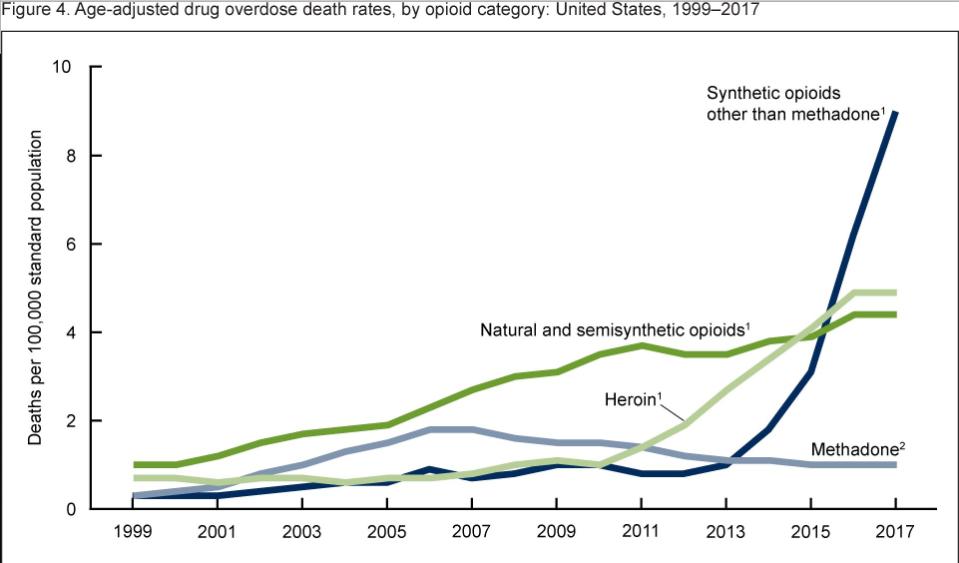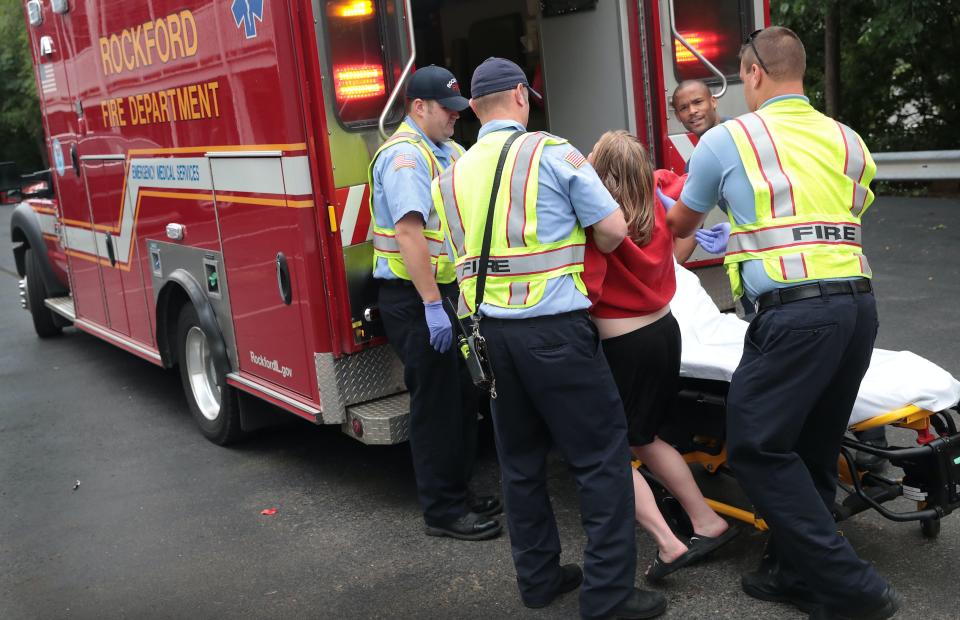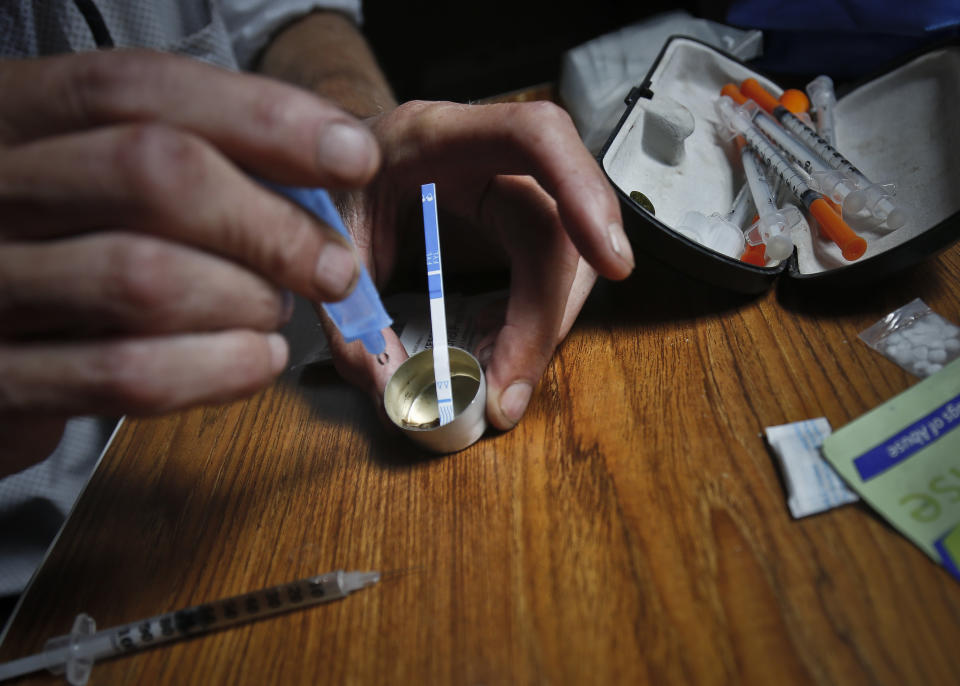Pharma CEO: 'This opioid crisis has become a fentanyl crisis'
The opioid crisis has become increasingly worse over the last decade and is estimated to cost the U.S. government nearly $38 billion in lost tax revenue due to employment loss.
Opiant Pharmaceuticals (OPNT), the company behind the overdose reversal drug Narcan, is in the process of developing nasal nalmefene, a drug aimed at treating opioid overdose — particularly synthetic opioids like fentanyl — in a more effective way.
“It really reflects the fact that this opioid crisis has become a fentanyl crisis,” Opiant Pharma CEO Roger Crystal told Yahoo Finance’s First Trade. “The majority of opioid overdose deaths in 2017 contained fentanyl. And fentanyl, while still an opioid, is a different beast.”

There were 70,237 drug overdose deaths in the U.S. in 2017. During that time, nearly 30,000 deaths were attributed to synthetic opioids — including fentanyl — which is an increase of more than 9,000 over the prior year, according to CDC data.
If Opiant Pharma is successful with nasal nalmefene, it could drastically decrease the number of overdose deaths from fentanyl. Crystal described nalmefene as “a similar type of molecule to Naloxone,” the drug that makes up Narcan. However, he pointed out, “it’s more potent, so it binds tighter, and it also lasts longer.”

Fentanyl has the ability to stop a user from breathing in less than a minute. CDC statistician Merianne Rose Spencer told NPR that since 2013, “fatal overdoses involving fentanyl doubled, ‘rising at an exponential rate.’”
Although Crystal believes that Narcan is effective, “what we are learning is that more and more naloxone is required to initially revive someone for an opioid overdose, and naloxone only lasts an hour to two in terms of its half-life.”
He added: “[Fentanyl] is 50 times stronger than heroin. It lasts longer than heroin. And, in fact, you need to intervene even quicker than you would with a heroin overdose.”

This is because “fentanyl is more likely to cause an overdose than heroin because it’s so potent and because the high fades more quickly than with heroin,” NPR reported. And often, fentanyl is mixed into heroin without the drug user even being aware.
“The concern is: Can someone, even if they’re initially revived, potentially fall back into an opioid overdose state?” Crystal said. “We think [nasal nalmefene] could be quite promising to address that.”
READ MORE:
A 'really important piece of evidence' shows how opioids keep Americans out of the workforce
Experts: Gillibrand’s opioid legislation is not 'the right way to do it'
'It didn't happen overnight': How the U.S. opioid crisis got so bad
Follow Yahoo Finance on Twitter, Facebook, Instagram, Flipboard, SmartNews, LinkedIn, YouTube, and reddit.

